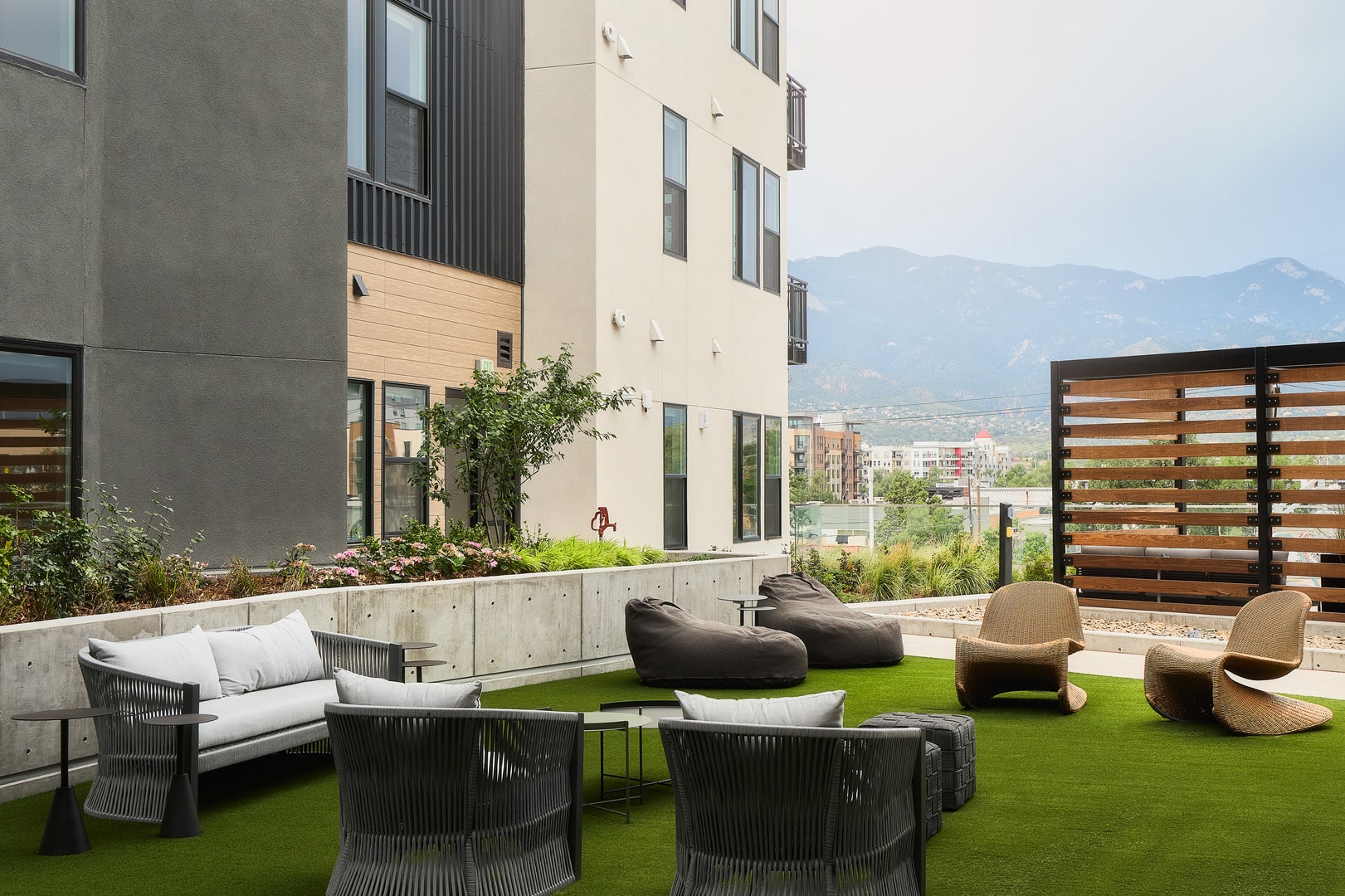Sustainable multi-family construction is rapidly becoming the industry standard, driven by environmental regulations, tenant demand, and long-term cost savings. With more developers adopting green building practices like biophilic design, energy-efficient systems, and eco-friendly materials it’s become more important than ever to partner with a builder who has the capabilities and know-how.
- 59% of residents will pay more for green buildings, while 83% believe they benefit health
- Biophilic design features like green roofs reduce stormwater runoff and urban heat
- Sustainable materials like mass timber and hempcrete often outperform traditional options
- Green building focuses on certifications, while sustainable construction considers the entire building lifecycle
You see it everywhere, developers are shifting their focus to environmentally conscious building practices. Keep in mind, this isn’t a trend, it’s something that is definitely here to stay.
With stricter regulations, growing tenant demand for eco-friendly features, and the long-term financial benefits becoming clearer, sustainable multi family housing construction is becoming a forefront issue in commercial real estate development.
What's Driving Multi-Family Sustainable Designs?
The construction industry policies of the past have led to a growing desire for environmentally friendly processes. Property developers and architects are acknowledging that traditional building methods can be harmful to the environment, making it difficult to sustain them long-term without serious environmental consequences.
Another factor driving these changes is tightening government regulations. At the same time, investment firms are prioritizing ESG goals, making sustainable properties more attractive to lenders. Your future tenants are also voting with their wallets and 59% of residents say they’d pay more to live in a green building.
Multi-Family Home Construction Design Strategies
Modern multi family construction projects are about combining innovation with amenities that provide modern comfort.
Biophilic design has emerged as a game-changer, incorporating living walls, green roofs, and natural landscaping that serves multiple purposes—these features reduce stormwater runoff, combat urban heat islands, and create appealing outdoor spaces that residents actually use.
Energy efficiency goes beyond simple LED lighting with today’s sustainable apartment construction incorporating smart thermostats, occupancy sensors, and advanced building enclosures that dramatically reduce energy consumption.
Water conservation measures include low-flow fixtures and intelligent irrigation systems that adjust to weather conditions. Many developments now feature EV-ready parking spaces, acknowledging the shift toward electric vehicles.
Material selection plays a critical role too. Developers are choosing low-VOC materials for better indoor air quality, using recycled steel alternatives and even exploring innovative options like hempcrete and mass timber. These materials often outperform traditional options while reducing the project’s carbon footprint.
Learn more about how we’re following our own advice on some recent projects!
What is the Difference Between Green Building and Sustainable Construction?
These two terms are usually interchangeable but it’s important to understand the difference. Green building typically focuses on specific certifications and standards like LEED Silver or Energy Star ratings. It’s about meeting established benchmarks for energy efficiency, water usage, and material selection.
Sustainable multi family residential construction takes a broader view to include the entire lifecycle of a building, from sourcing materials to demolition. This approach considers social impact, economic viability over decades, and environmental effects that extend beyond the property line. It’s about creating buildings that enhance their communities while minimizing long-term environmental impact.
Final Thoughts
The shift toward sustainable construction in multifamily housing represents more than an environmental imperative, it’s a smart business strategy that attracts quality tenants, reduces operating costs, and future-proofs your investments.
As regulations continue to evolve and tenant expectations rise, partnering with a construction firm that understands both traditional building excellence and cutting-edge sustainable practices becomes essential for success in today’s market.
Learn more about our multi-family building construction services here.
